Protecting the extraordinary beauty of beach scrub
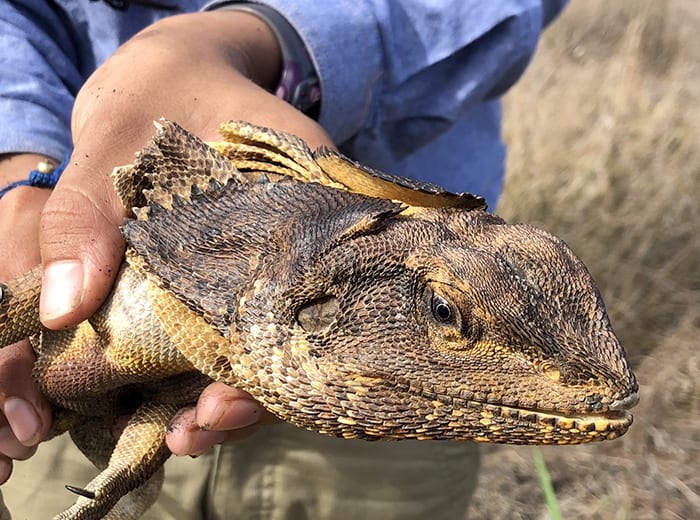
Frill-necked lizard in beach scrub at Rollingstone
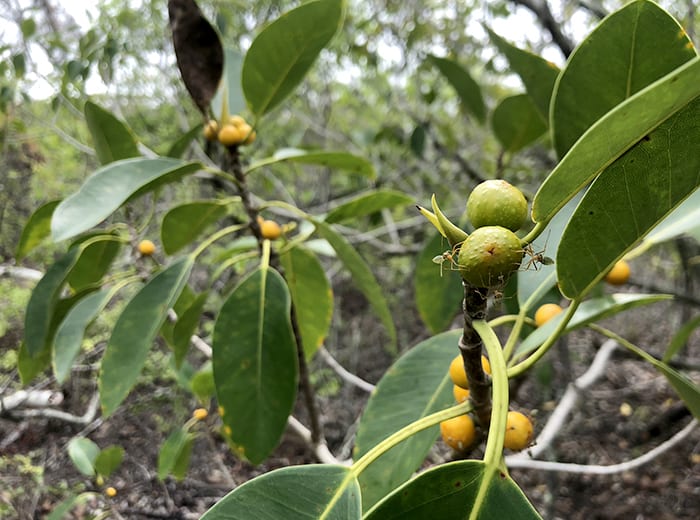
Green ants on a fig tree

Red lychen in beach scrub at Rita Island
Beach scrub, the
“supermarket of the bush”
Cool, bare earth underfoot beneath a canopy of lush, green foliage leaving filtered sunlight and no shadows. Colourful tropical fruit is attended by birds, buzzing insects and swarming green ants accompanied by a soft background noise of the sea lapping at the shore, and not very far away.
Such a strikingly beautiful scene might be found in an equatorial rainforest fringing the ocean, but it is an experience available to North Queenslanders living on, or near, the coast.
This is beach scrub, the strip of bushland separating sandy beaches from the mainland proper which, at first glance, might seem unremarkable.
Growing in small communities on old sand dunes along the coast, beach scrub is the focus of an on-going effort to protect and preserve those communities and the habitat they provide for myriad insects, birds and small animals.
Dubbed the “supermarket of the bush”, a healthy beach scrub community will typically include a range of traditional food plants including trees like the Burdekin plum, red coondoo, beach tuckeroo, beach cherry, wild prune and small-leafed fig.
It supports a range of wildlife including various monitors and lizards like the frill-necked lizard pictured which was spotted during an inspection of beach scrub near Rollingstone recently.
With virtually no ground cover because the closed canopy overhead restricts the amount of sunlight available to lower-storey plants, conditions underneath the trees are ideal.
Through its National Landcare Program, the Australian Government funded a two-year project to protect beach scrub along the coast of the Lower Burdekin catchment.
The project – Protecting Beach Scrub Communities – conducted by Natural Resource Management company NQ Dry Tropics concluded in June.
It has been succeeded by a five-year project funded through the second wave of the National Landcare Program targeting 18 beach scrub communities from Crystal Creek north of Townsville to Bowen in the south.
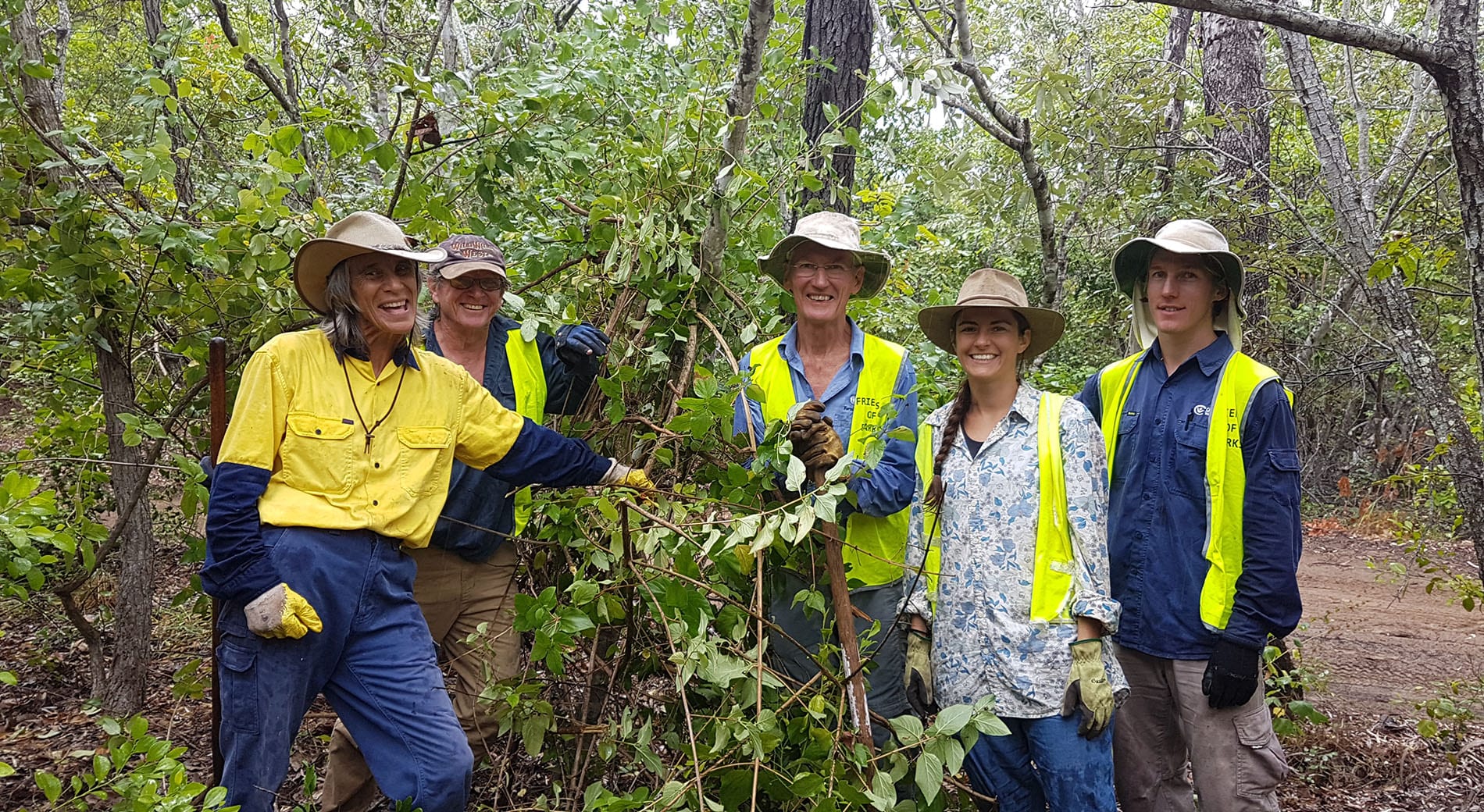
Volunteers tackle rubbervine invading beach scrub north of Townsville
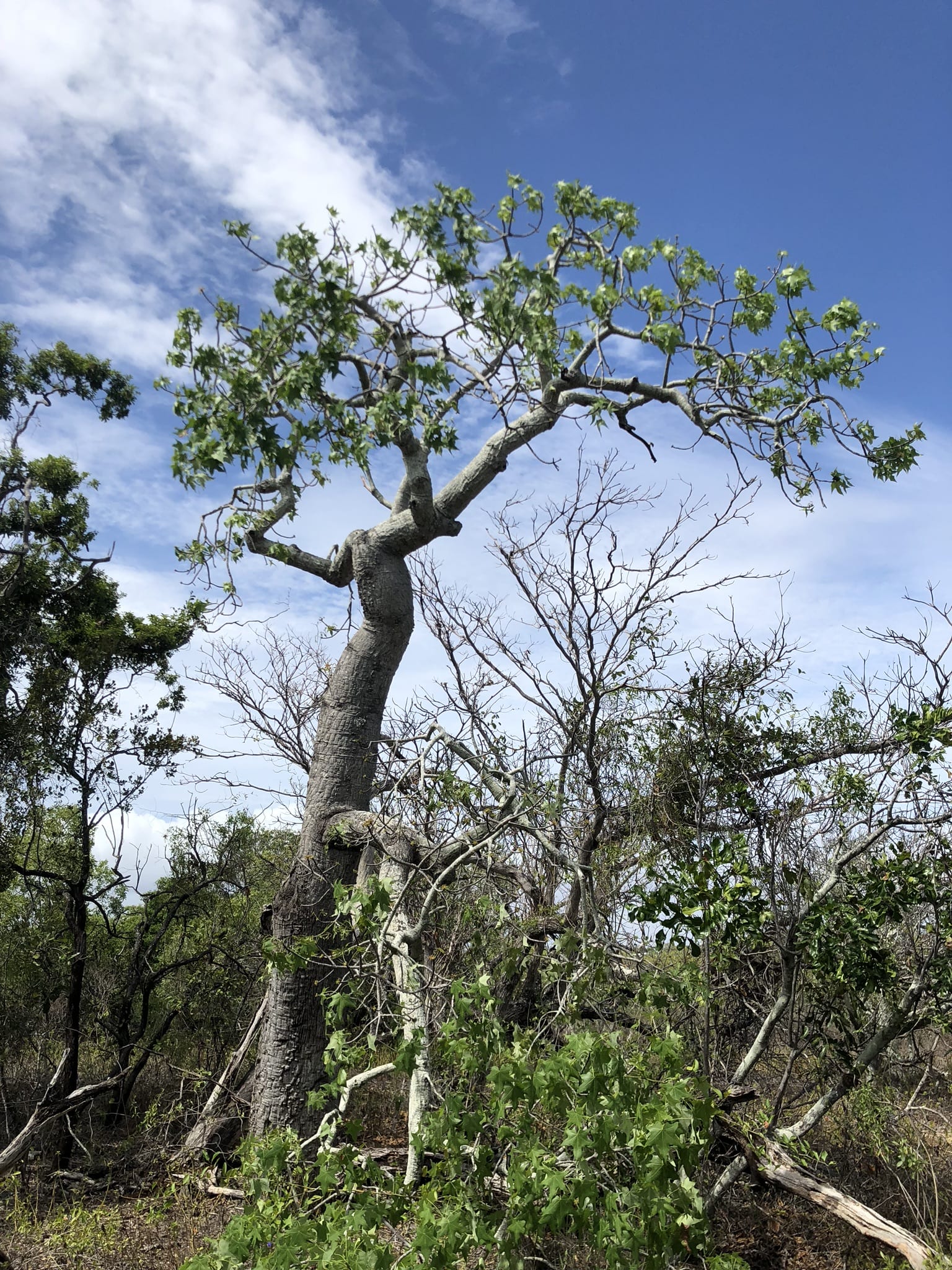
A bottle tree in remnant beach scrub
‘It’s in fairly good condition’
NQ Dry Tropics project officer Thijs Krugers said that on the whole the condition of the 18 beach scrub communities from Crystal Creek near Rollingstone to Bowen was fairly good.
“The biggest threat is posed by weeds and the fire risk they introduce,” Mr Krugers said.
He said fire was devastating for beach scrub and most beach scrub communities would not survive even one bushfire. Tall grass, particularly, posed a significant threat.
“If the canopy is five to eight metres off the ground, and invading tall grass, like guinea grass, for instance, burns in a fire, it will lead to a canopy fire,” he said.
Once sunlight was able to penetrate to the ground through the damaged canopy, undergrowth would quickly overtake trees in the beach scrub community even if some of the trees survived the fire.
Relatively fire-resistant species like the Burdekin plum and beach cherry trees were often the only beach scrub community members left standing after a fire, but, without intervention and some rigorous maintenance, they would be overwhelmed by the subsequent invasion of grass and other ground cover plants.
It’s a delicately-balanced ecosystem and there are ever-present threats to it, even from within its own ranks.
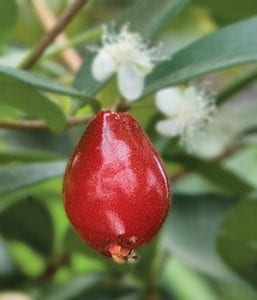
The beach cherry (pictured) is a pretty shrub with thin, small leaves, and bright orange fruit, sometimes so elongated, it resembles the shape of a teardrop.
Looks, however, can be deceiving. It is actually a parasitic tree itching for the opportunity to murder its neighbours by sucking out their sap through its roots.
While the natural balance of the beach scrub community is maintained, the beach cherry makes for a comfortable neighbour adding its canopy to the collective.
But, if the ecosystem becomes unbalanced, and its neighbours are diminished in vitality because of it, watch out!
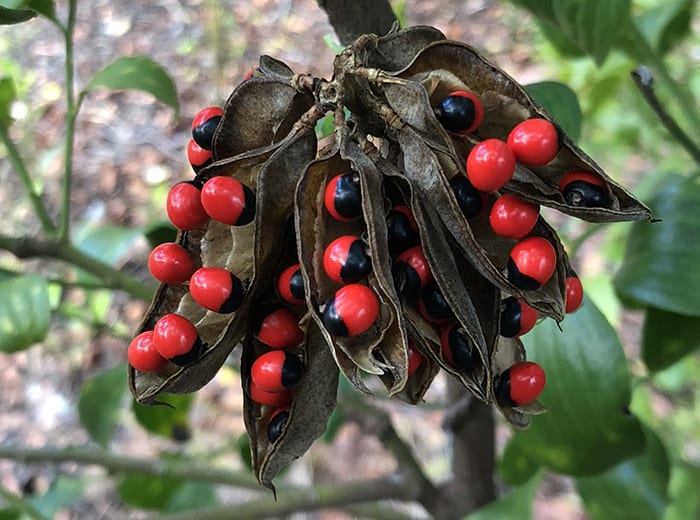
Crab's eye vine, or giddee giddee
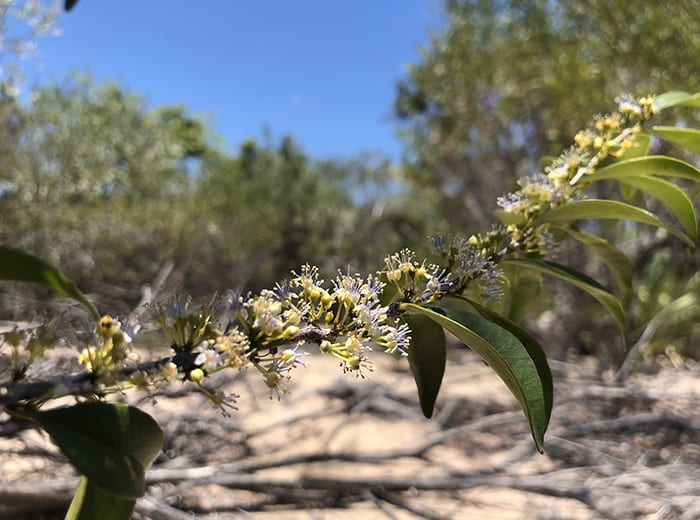
A horseshoe flower in sparsely-populated beach scrub
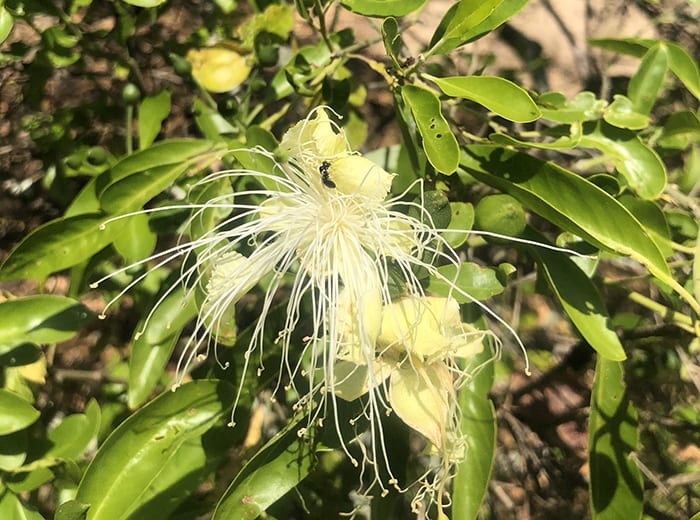
The native caper flower attracts many insects
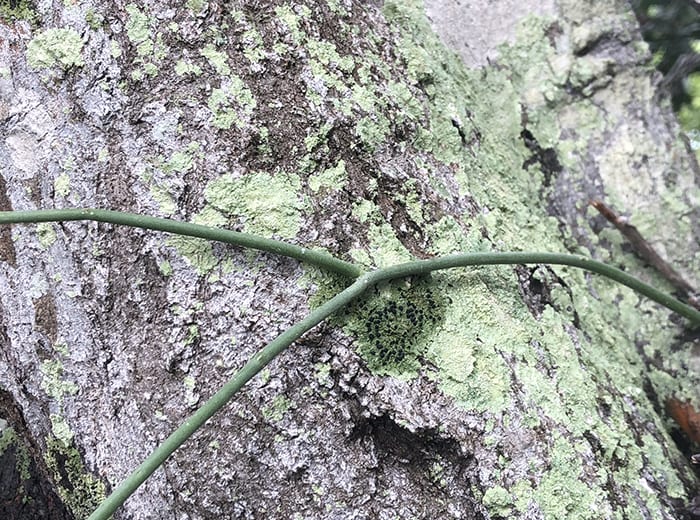
A caustic vine makes for an interesting contrast against some green lychen
Two types of beach scrub in the project
Mr Krugers (pictured) said the project tackled two types of beach scrub – the microphyll (or short-leafed) scrub prevalent in drier areas up to Yabulu and the mixed microphyll and notophyll (medium-size leaf) scrub that grow on sand dunes from Yabulu to the Top End.
He said communities of the microphyll and notophyll scrub were dwindling rapidly with an estimated 300ha of scrub remaining.
Areas of microphyll scrub were reducing but were better represented with about 2000ha of healthy scub remaining.
Mr Krugers said his aim during the next five years was to work with landholders and land managers, Traditional Owners and volunteer groups such as Conservational Volunteers Australia to reduce the imminent threats to the beach scrub communities.
For the most part, that means clearing invasive weeds such as rubbervine, lantana, mother-in-law’s tongue and guinea grass.
“Beach scrub is quite quick to revegetate so once we intervene and remove the weeds, it takes only on-going maintenance to bring an area back to the point where it is self-sustaining and able to defend itself from encroachment,” Mr Krugers said.
Artificial revegetation, an expensive exercise, was only practical in extreme cases.
“Most of the long-term problems in beach scrub occur because of damage caused by people,” he said.
“A healthy beach scrub can recover from even the wildest storm, but not if it has also been damaged by something like a four-wheel-drive track through it, or a clearing created for camping.”
He said he hoped he would be able to include a list of educational initiatives and publications addressing that problem in his final report on the project in June 2023.
Top of his list would be persuading people to use 4WDs and trail bikes sensitively through areas of beach scrub.
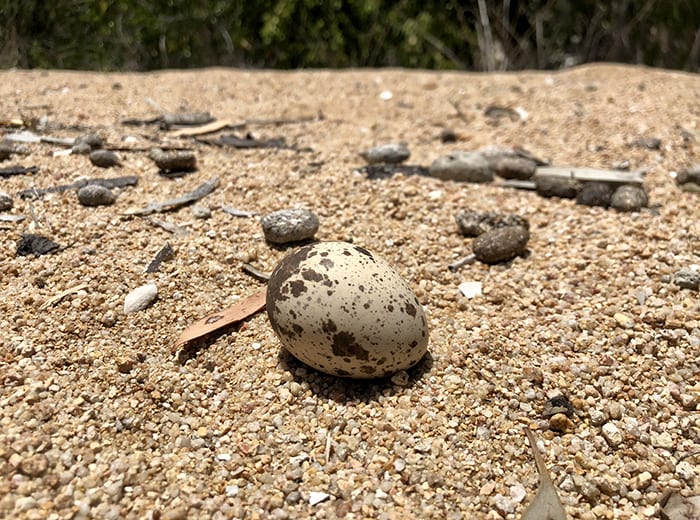
A stone curlew's egg camouflaged on the floor of a beach scrub community
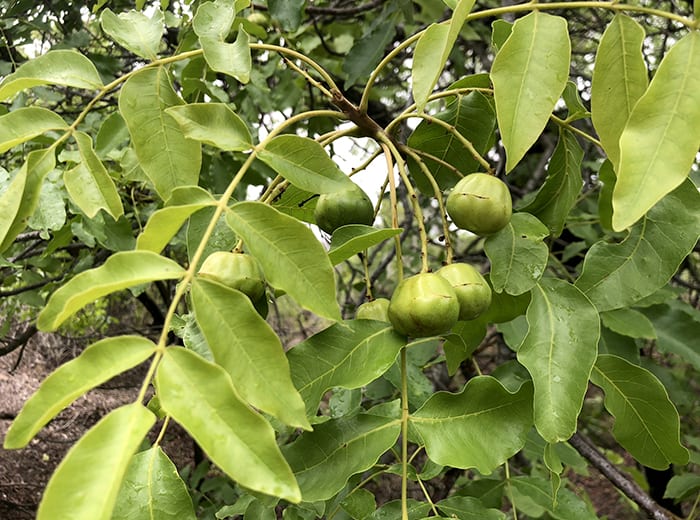
Fruit on a Burdekin plum tree

